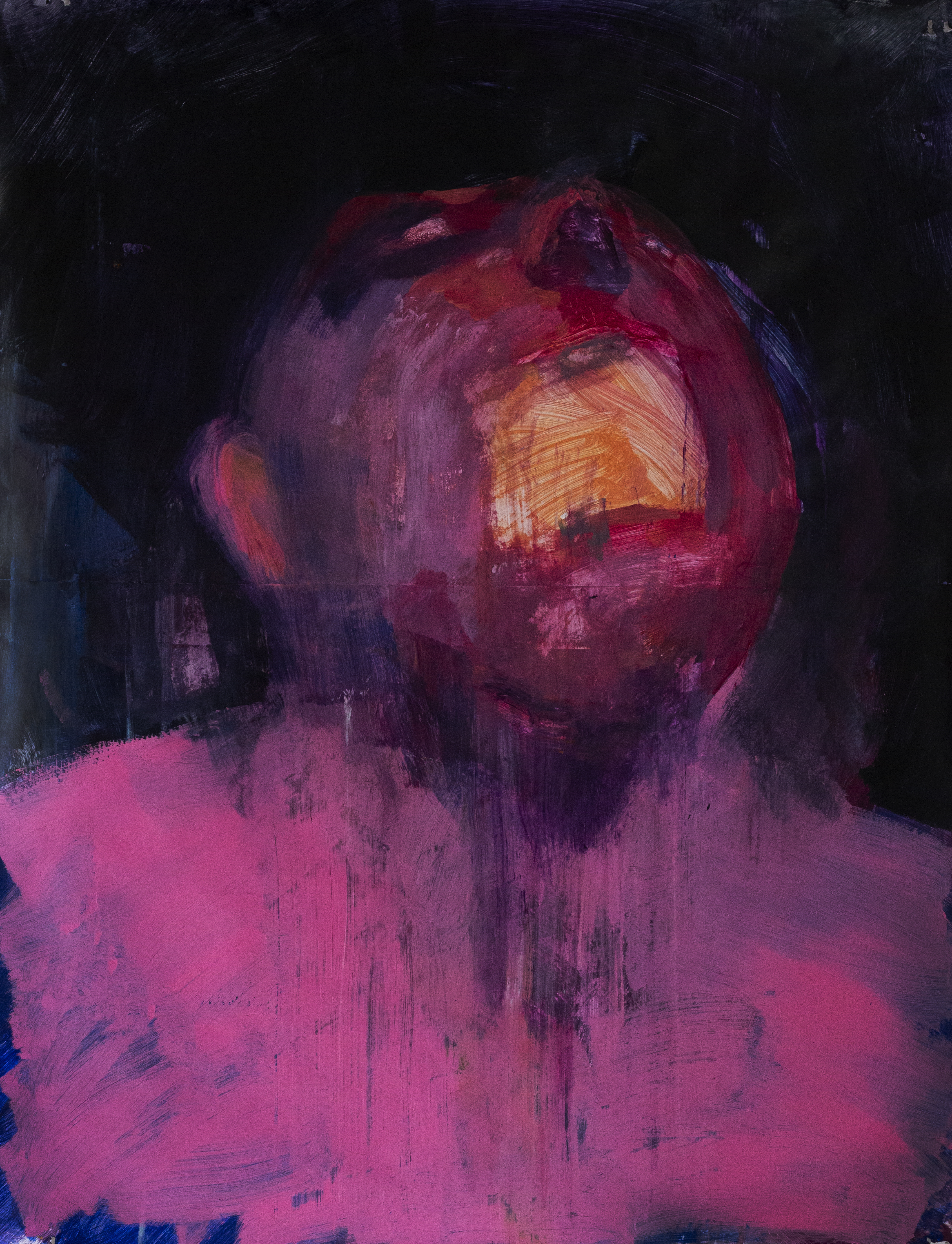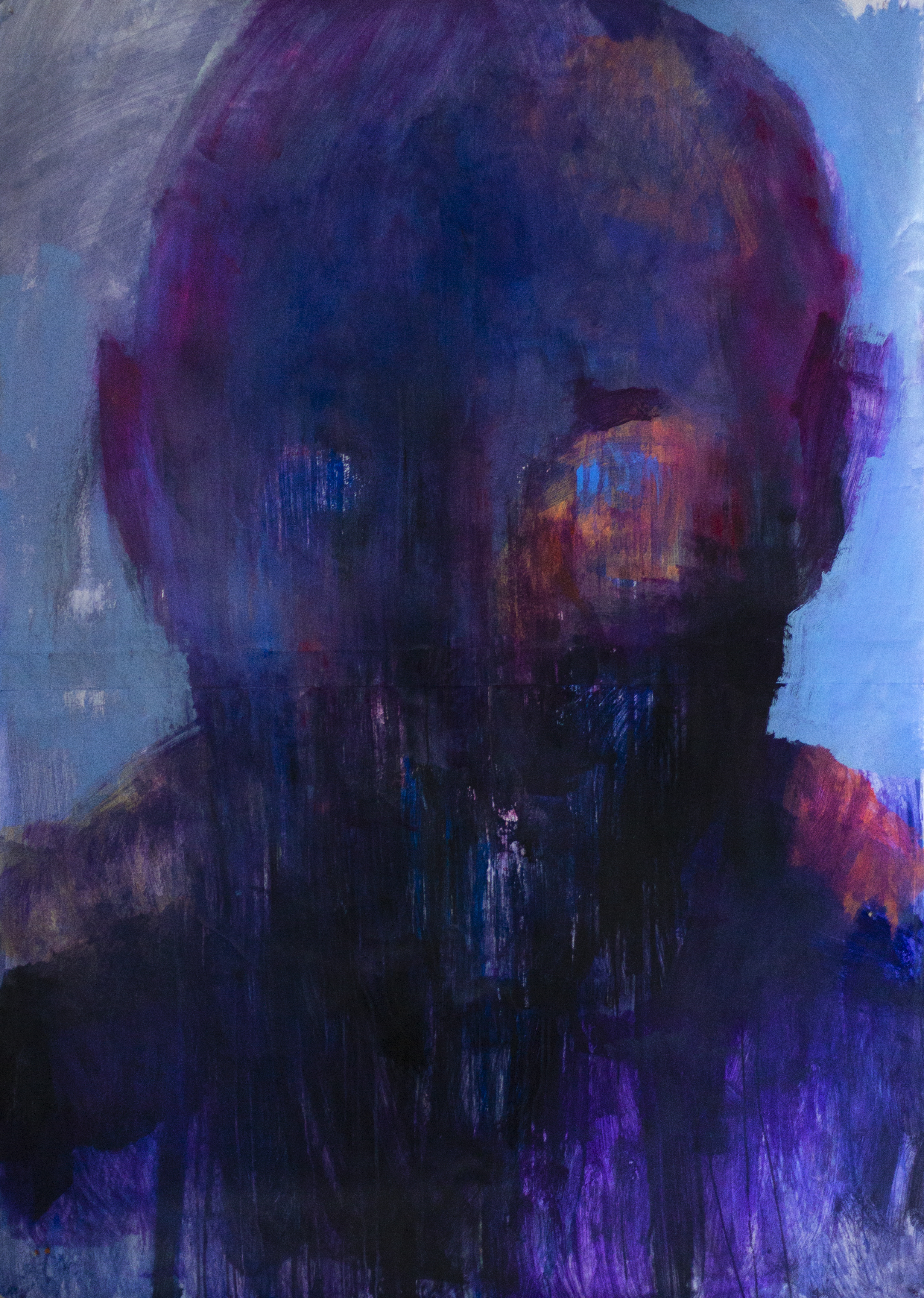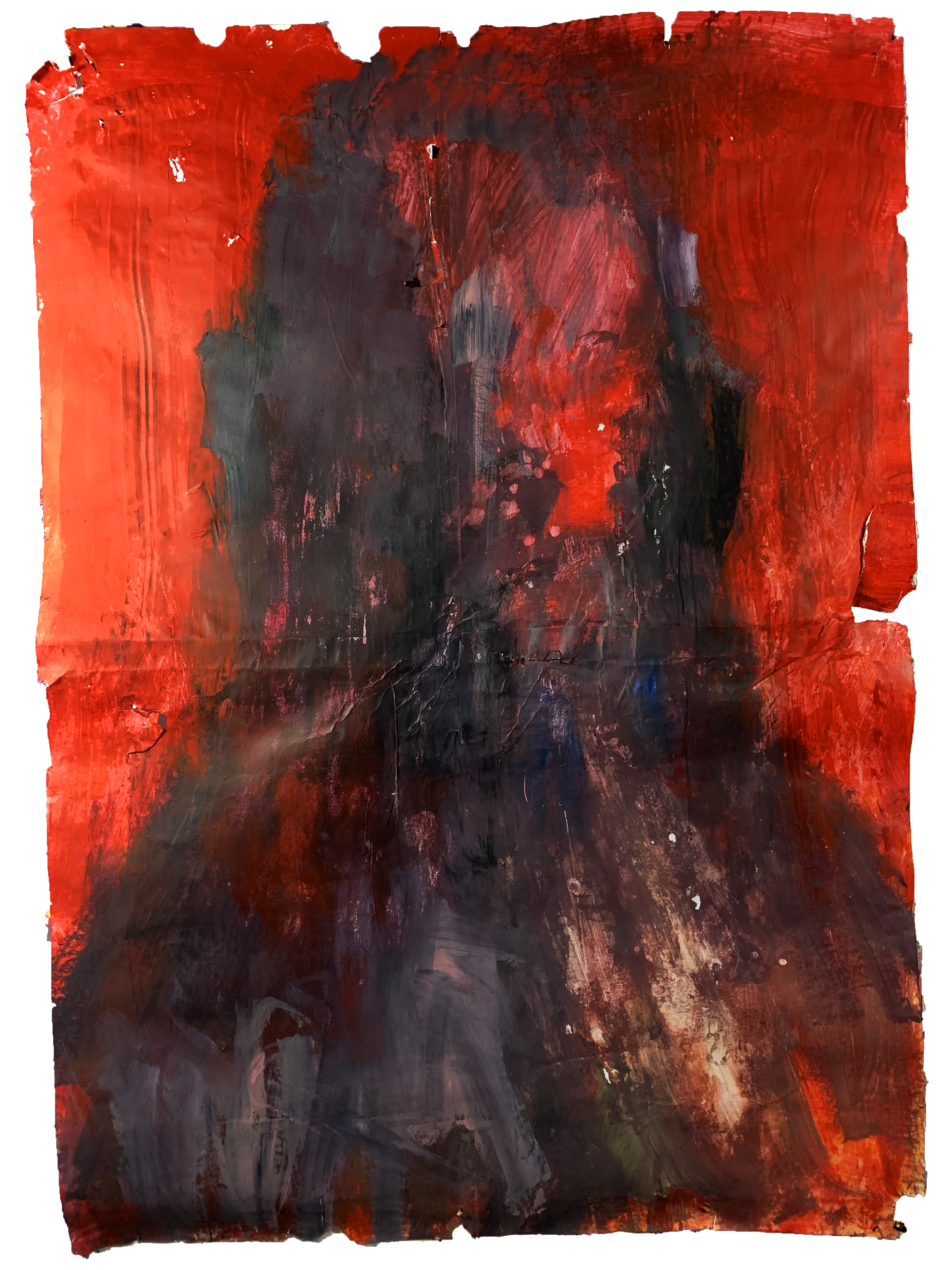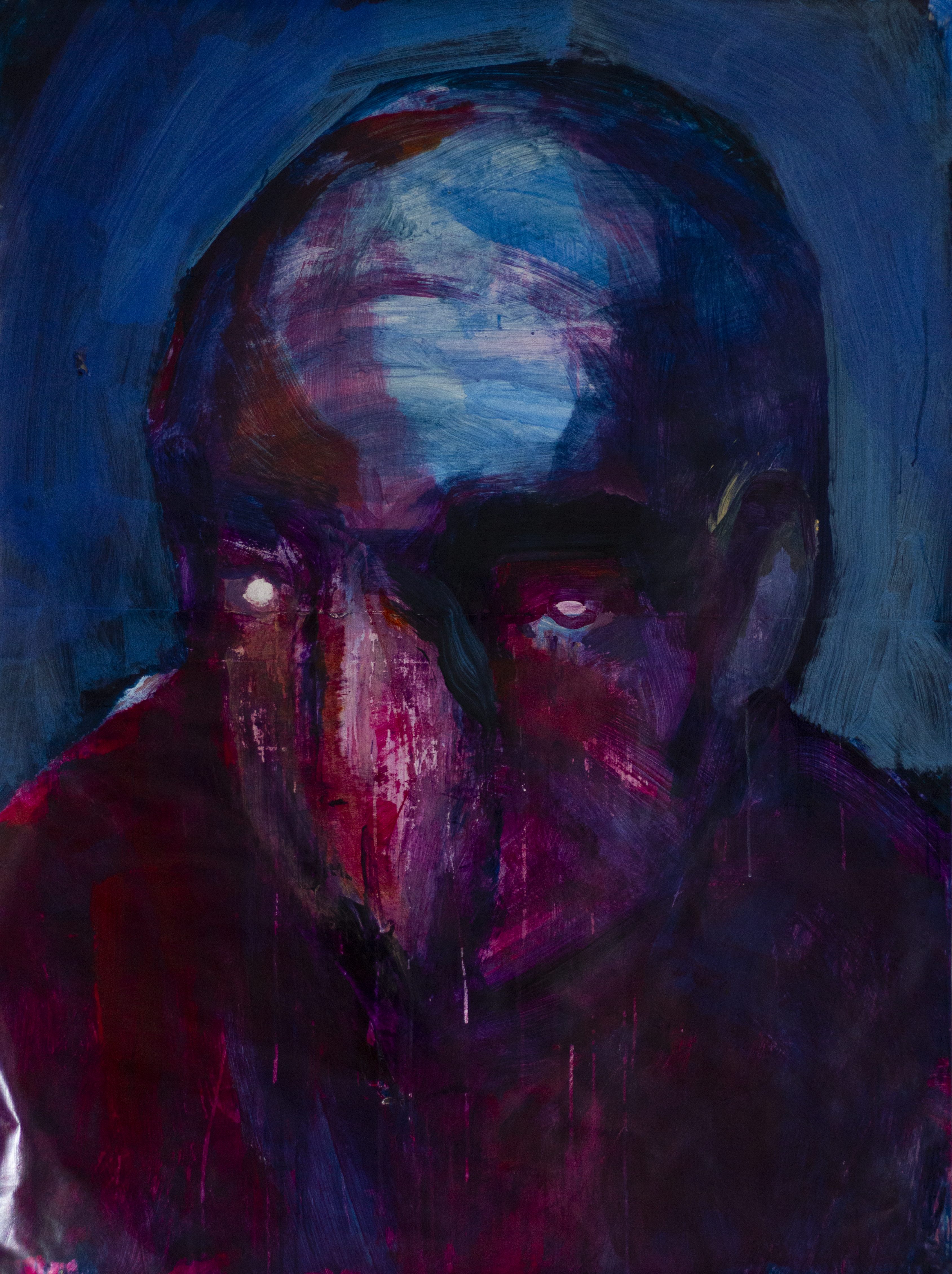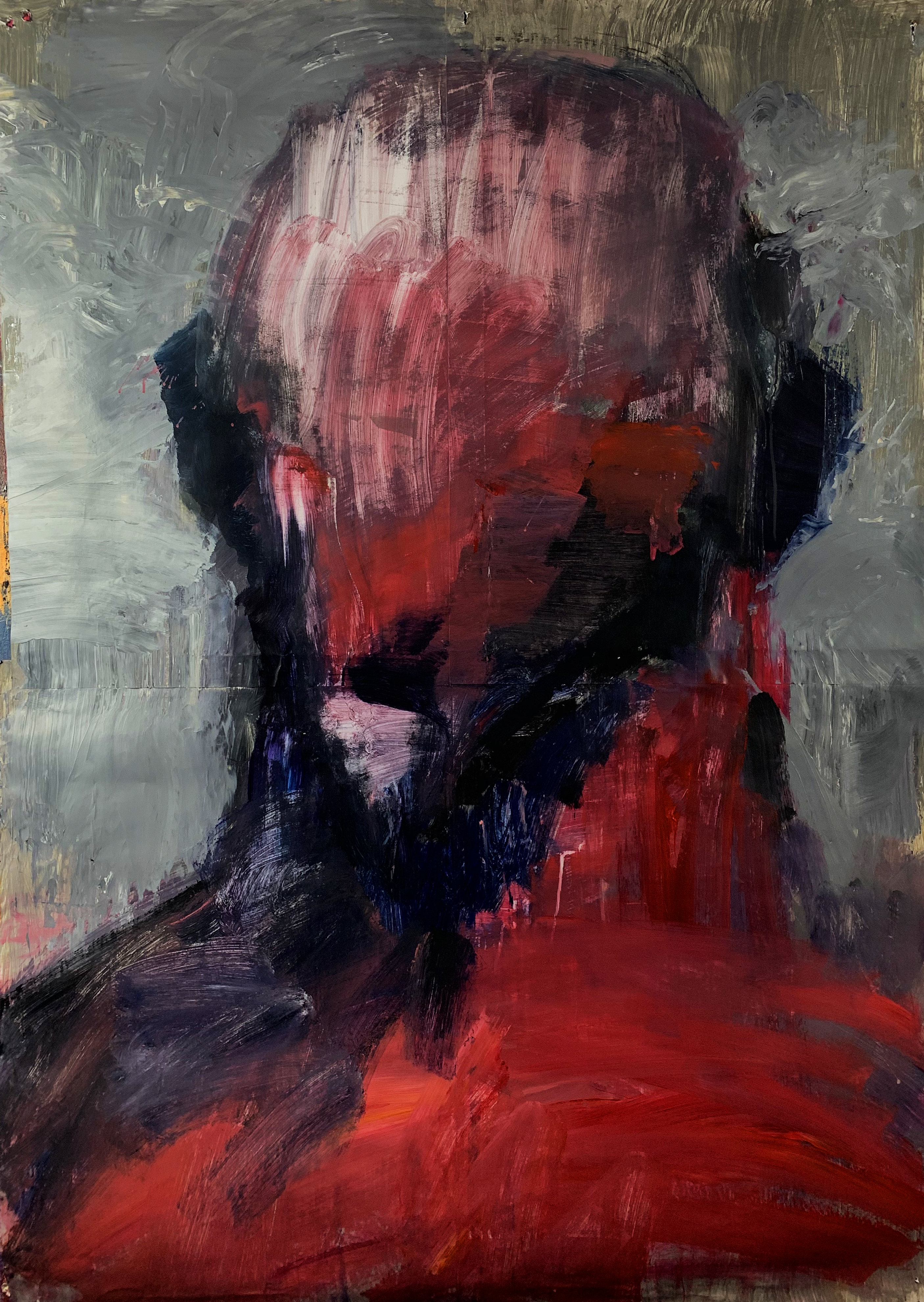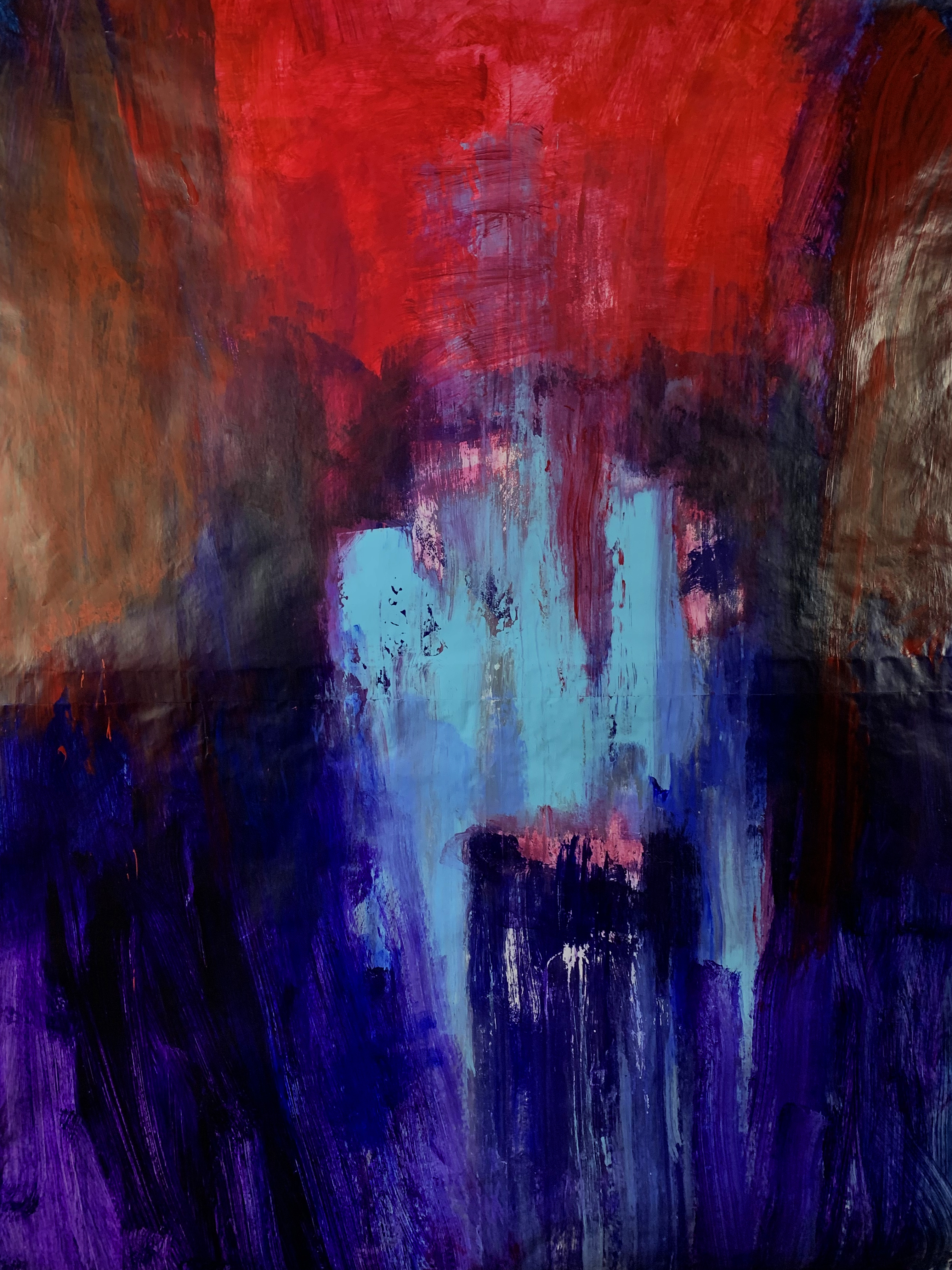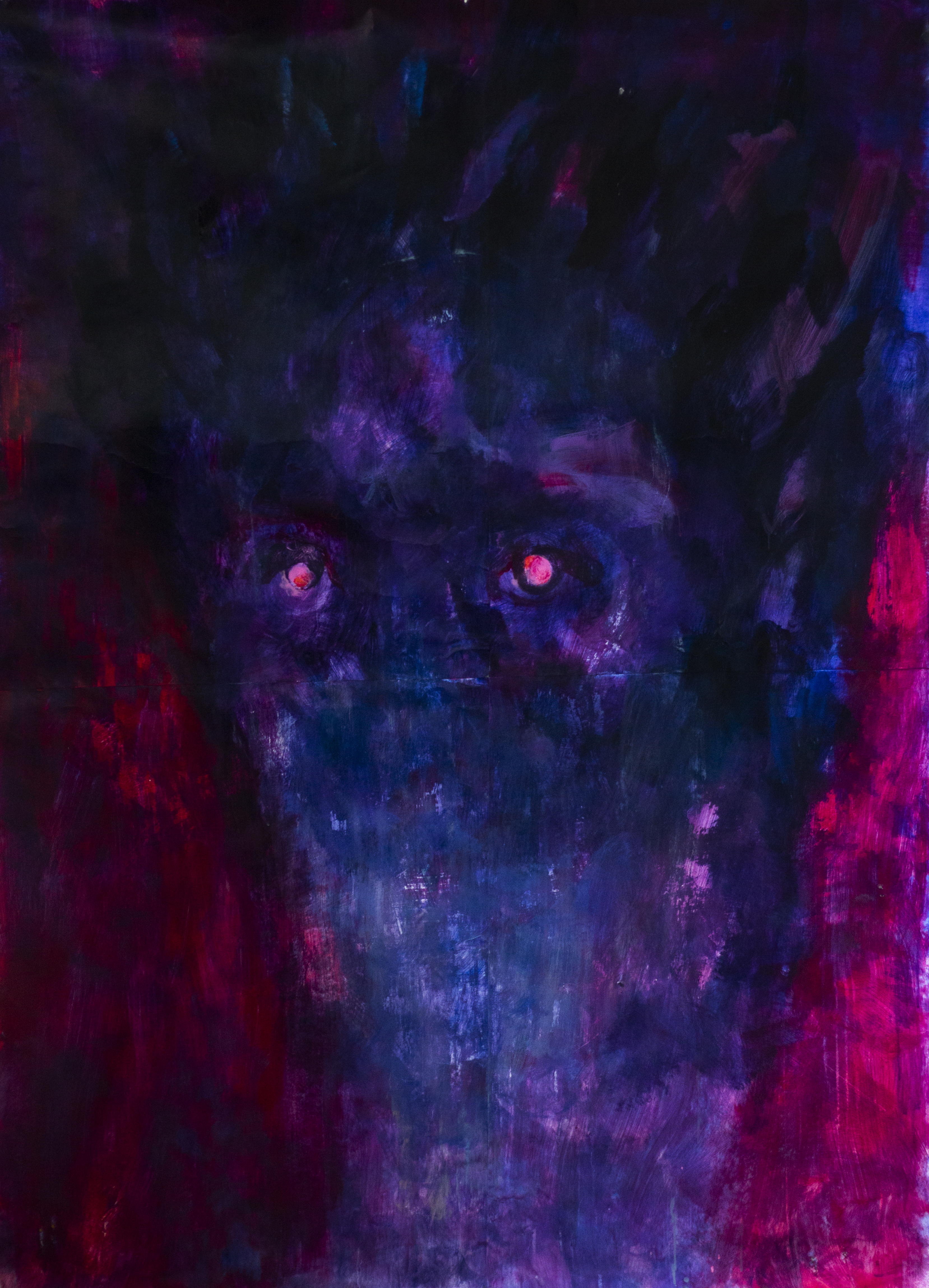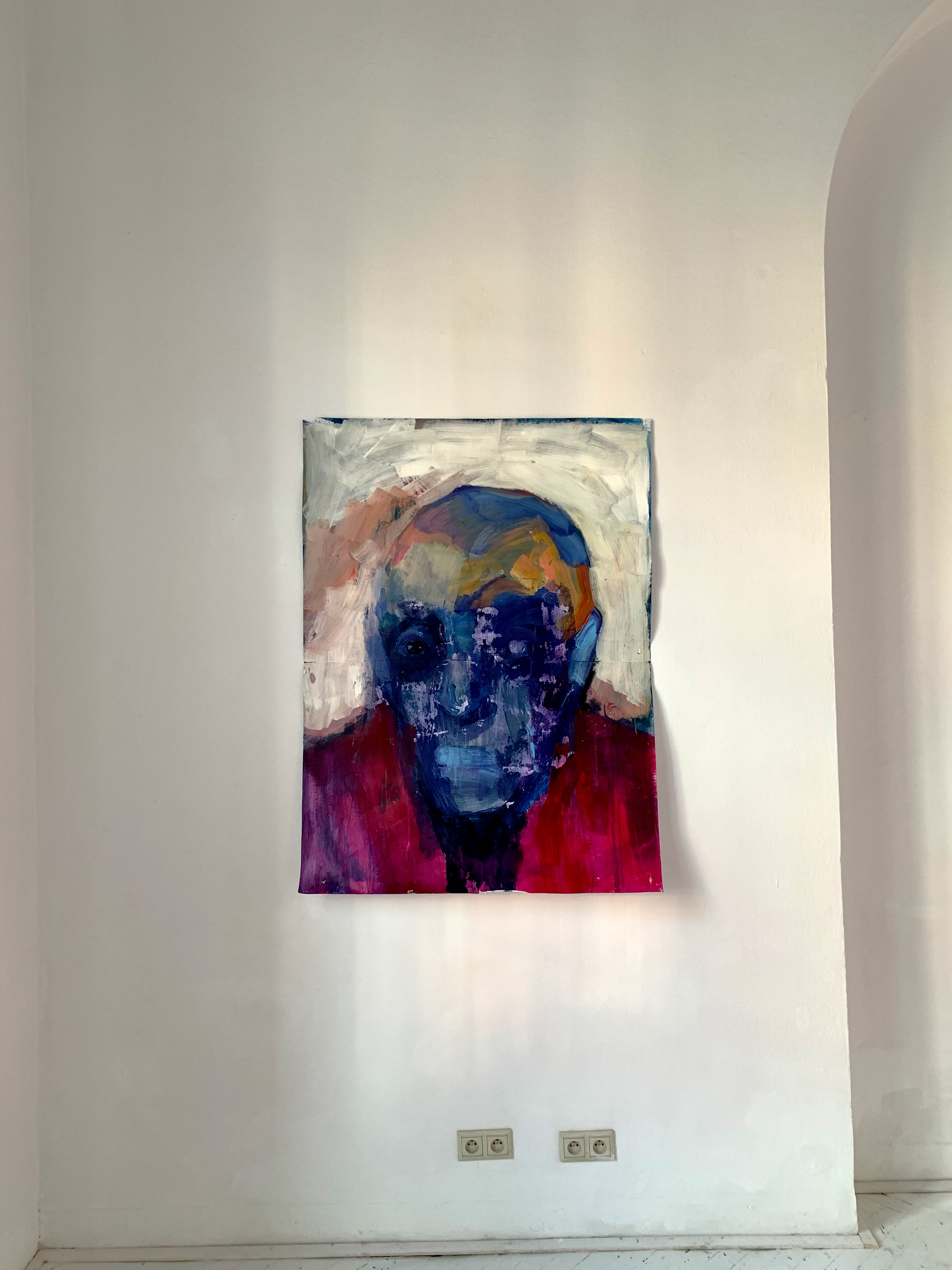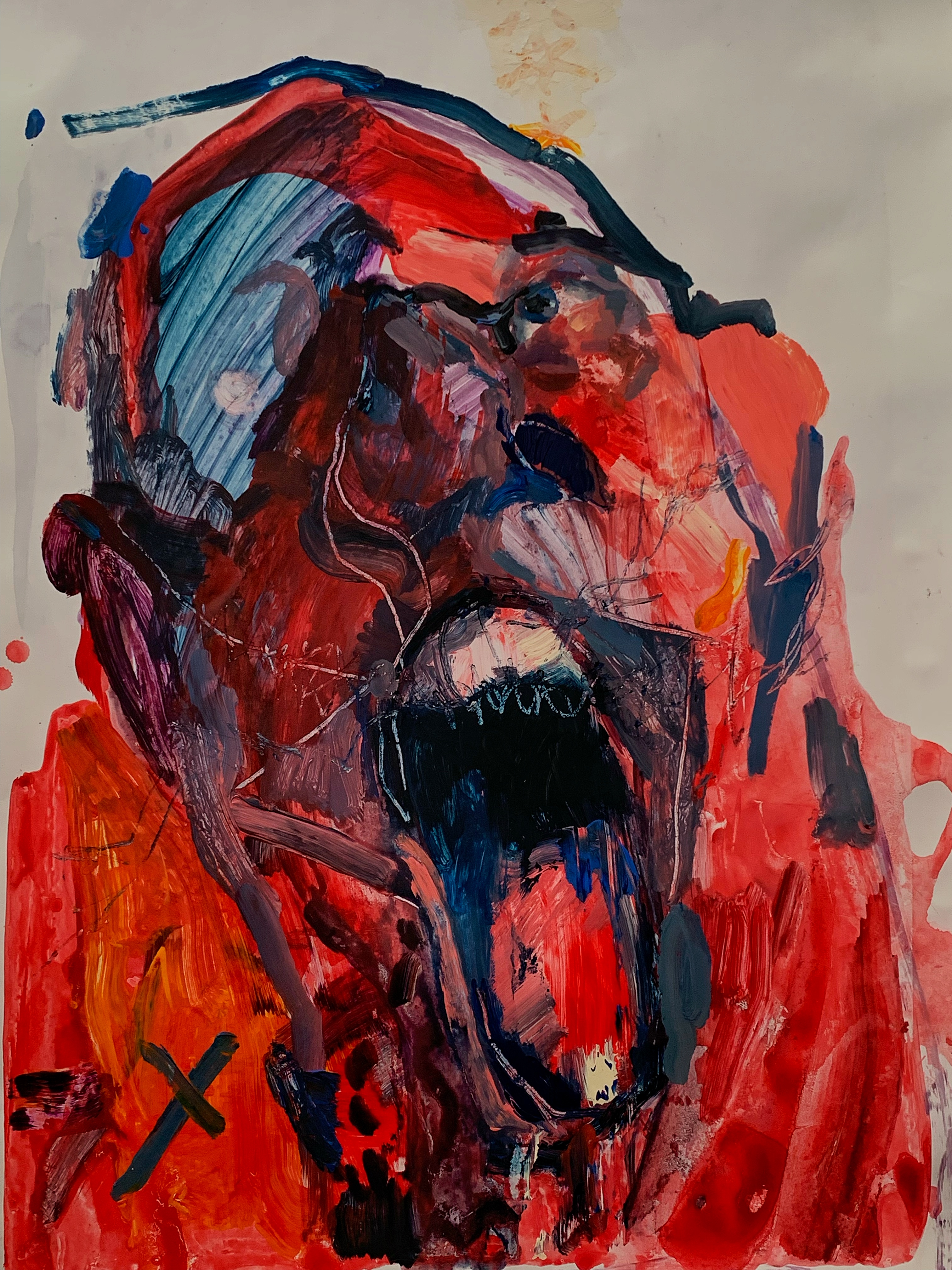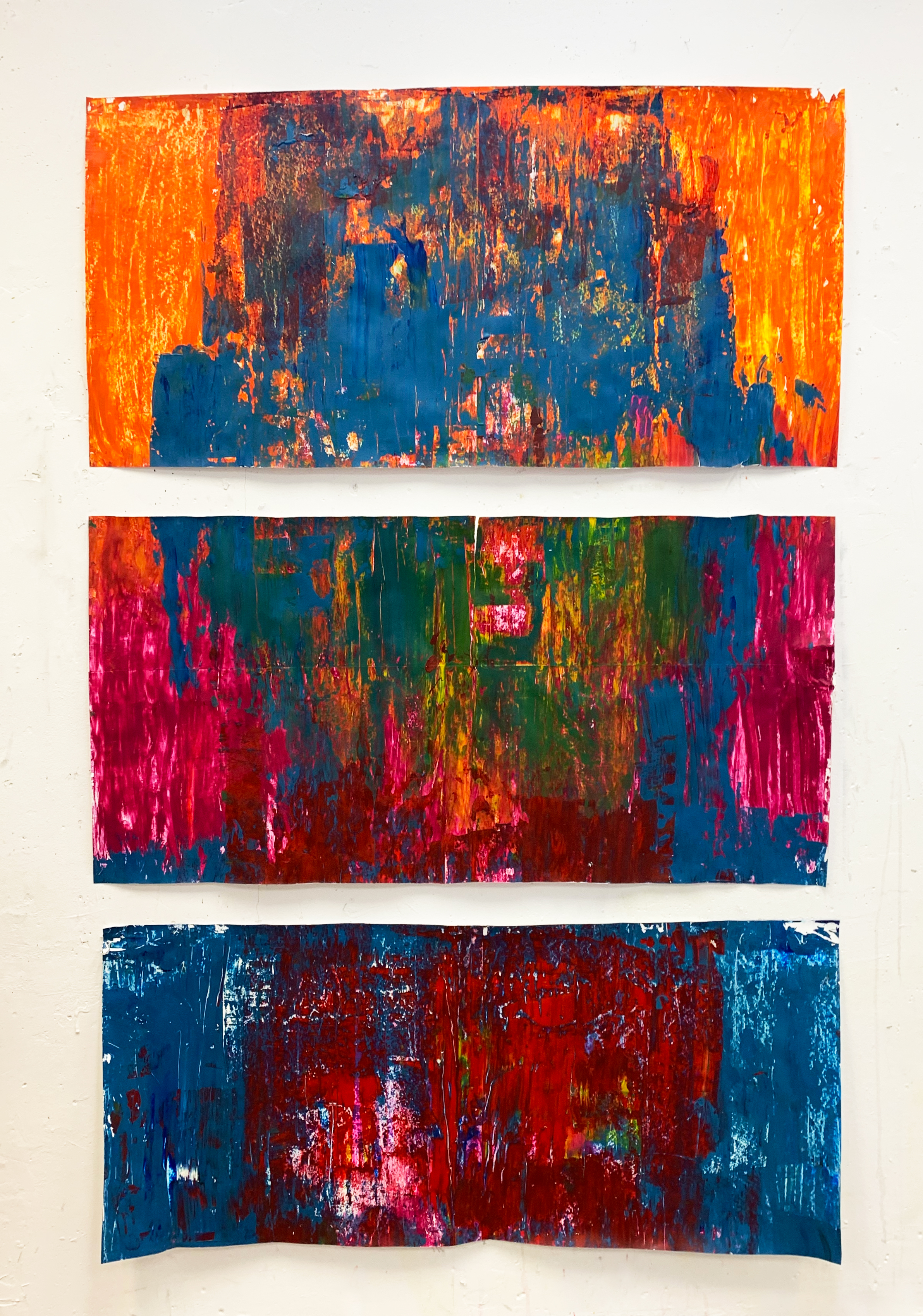Ruń
2024
Sculpture, site-specific.
~340x100x10 cm, concrete, fiber optics.
Ruń is an over three-meter-tall concrete sculpture
installed in the village of Mochnate in the Podlasie region (Polish-Belarusian border). It embodies the metaphor of "ruń" (from Belarusian: young grass) — fresh growth emerging through new soil, symbolizing cultural adaptation and transformation.
Podlasie is a region where historical narratives and traditions intersect, making it a kind of cultural borderland. The location for the sculpture was chosen with this layered context in mind — a place where historical memory is not strictly shaped by a singular state policy but is often defined by collective and personal remembrance. Concrete is traditionally associated with monumentality and official memory, but in this project, it takes on a different meaning. Ruń is not a conventional monument capturing a particular story or a specific figure. Instead, it remains abstract and undefined, representing memory that is not institutionalized yet continues to exist within the cultural landscape from which the sculpture emerges. Fiber optic strands integrated into the sculpture allow the concrete to sparkle in sunlight, at dawn, and at sunset, making the piece subtly responsive to its surroundings.
Ruń is an attempt to capture unofficial or suppressed memory, reminding us that any space carries multiple, often invisible contexts. It may be the experience of families whose identity does not fit into state frameworks, migration stories that blur the boundaries of national belonging, or a sense of connection to a place shaped not by official toponyms and memorials, but by individual experience. The sculpture, as a "monument to nothing," acts as a marker of a space where official memory is absent or deliberately left undefined.
Podlasie is a region where historical narratives and traditions intersect, making it a kind of cultural borderland. The location for the sculpture was chosen with this layered context in mind — a place where historical memory is not strictly shaped by a singular state policy but is often defined by collective and personal remembrance. Concrete is traditionally associated with monumentality and official memory, but in this project, it takes on a different meaning. Ruń is not a conventional monument capturing a particular story or a specific figure. Instead, it remains abstract and undefined, representing memory that is not institutionalized yet continues to exist within the cultural landscape from which the sculpture emerges. Fiber optic strands integrated into the sculpture allow the concrete to sparkle in sunlight, at dawn, and at sunset, making the piece subtly responsive to its surroundings.
Ruń is an attempt to capture unofficial or suppressed memory, reminding us that any space carries multiple, often invisible contexts. It may be the experience of families whose identity does not fit into state frameworks, migration stories that blur the boundaries of national belonging, or a sense of connection to a place shaped not by official toponyms and memorials, but by individual experience. The sculpture, as a "monument to nothing," acts as a marker of a space where official memory is absent or deliberately left undefined.




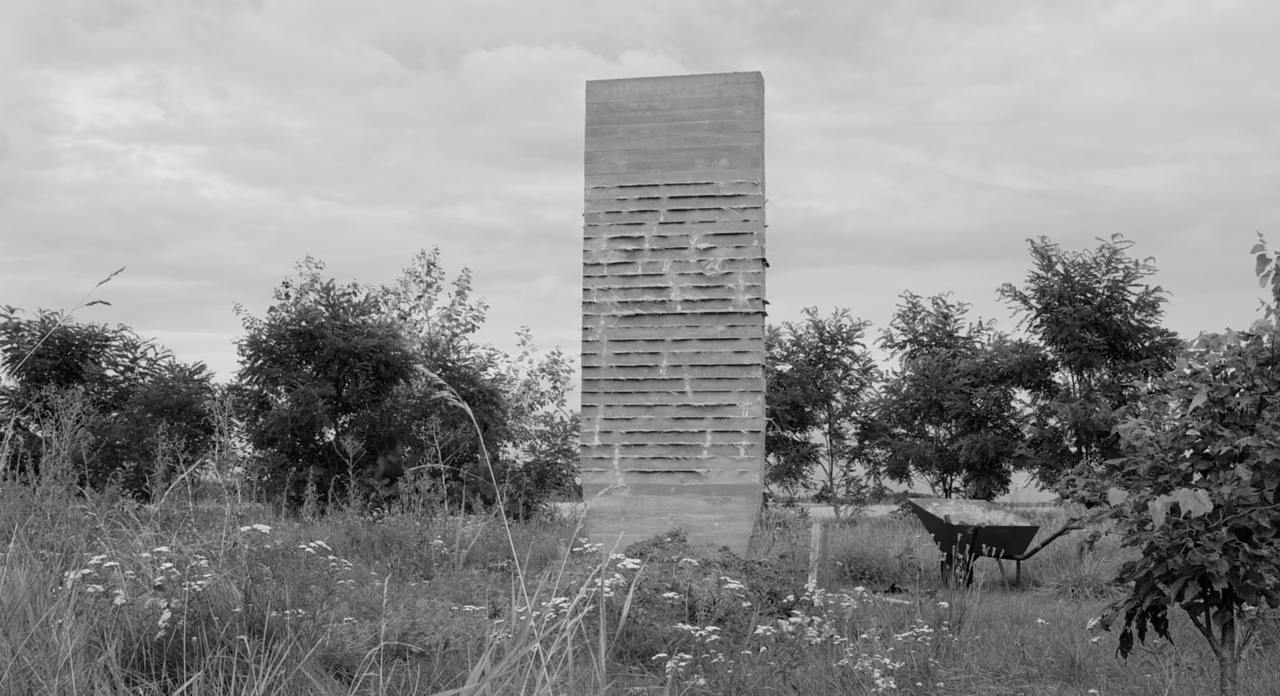


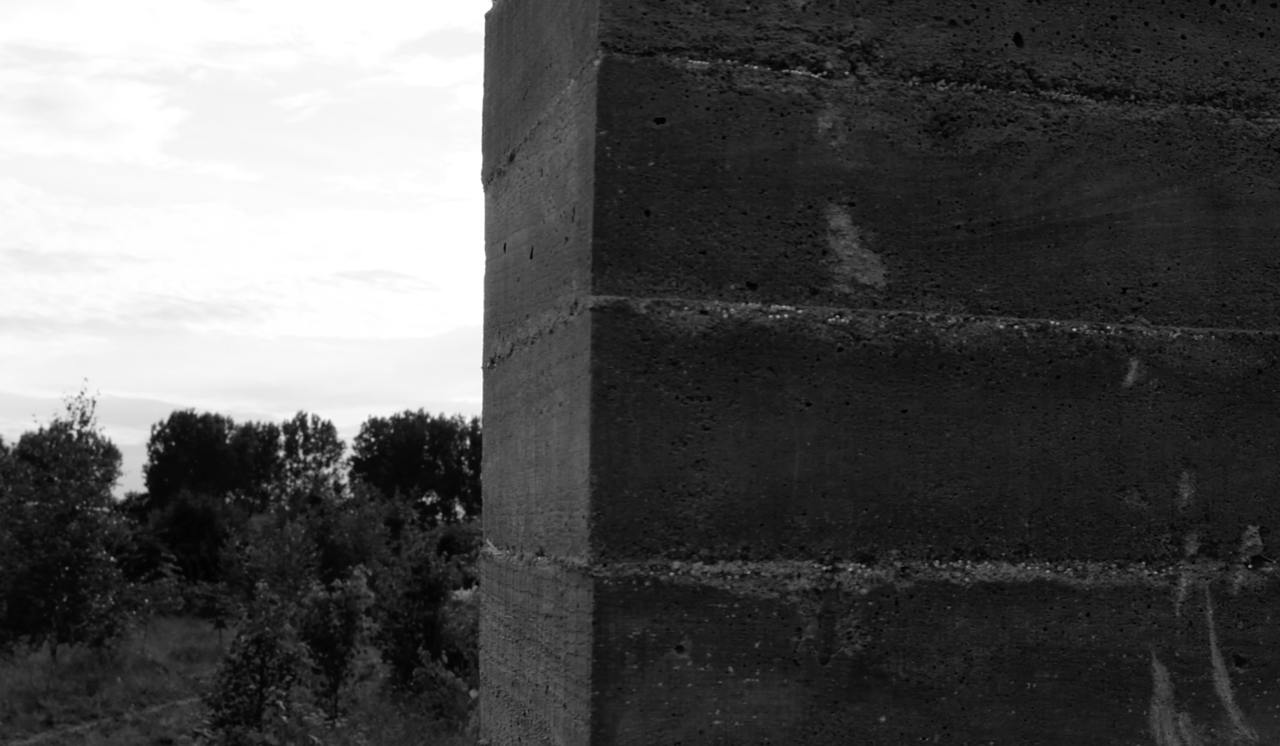
Za’opatrzenie / Provision
2023
Installation, actionism
The word "zaopatrzenie" can be roughly translated from Polish as "supply", but "opatrzenie" means patching, cleansing it of something, filling it, performing a sacrament over a dying person.
After being created, the sculptures were later brought back to the places where they originated: a forest near Vitsula River, into the Vistula River, and in a young woodland in Podlasie region. This gesture is both material and symbolic. The Giants embody people whose connection to the land has been disrupted or erased — people whose presence becomes politically uncomfortable or historically inconvenient. By returning these figures to the soil, I speak of a return that defies disappearance. The figures dissolve not into oblivion, but into the very landscape that shaped them.
The materials — old bedsheets, pillowcases, duvets — suggest intimacy, the body, and sleep, but also the threshold between memory and forgetting. Fallen branches collected from the Vistula and the Polish-Belarusian border form a fragile skeleton, carrying the trace of the landscape. Plaster locks these elements together, only for the sculpture to slowly break apart again over time. This cycle of decay is not destruction but transformation. The sculptures, once monumental and still, become porous, fall back into the ground, and root themselves like memory — not to be buried, but to grow differently.
After being created, the sculptures were later brought back to the places where they originated: a forest near Vitsula River, into the Vistula River, and in a young woodland in Podlasie region. This gesture is both material and symbolic. The Giants embody people whose connection to the land has been disrupted or erased — people whose presence becomes politically uncomfortable or historically inconvenient. By returning these figures to the soil, I speak of a return that defies disappearance. The figures dissolve not into oblivion, but into the very landscape that shaped them.
The materials — old bedsheets, pillowcases, duvets — suggest intimacy, the body, and sleep, but also the threshold between memory and forgetting. Fallen branches collected from the Vistula and the Polish-Belarusian border form a fragile skeleton, carrying the trace of the landscape. Plaster locks these elements together, only for the sculpture to slowly break apart again over time. This cycle of decay is not destruction but transformation. The sculptures, once monumental and still, become porous, fall back into the ground, and root themselves like memory — not to be buried, but to grow differently.






Giants
2022-2023
Sculptures. Plaster, old bedding, branches from Vitsula river.
~320 cm high each figure
Giants is a series of sculptures made from old
bed linen soaked in gypsum and fallen branches
collected along the Vistula River and the
Polish-Belarusian border. Fabric associated with
sleep and the body, and branches carrying traces of
the landscape, reflect themes of memory and
transition.
Monumental yet hollow, the works are sarcophagi without fixed form. They invite touch, but inside they remain open — spaces waiting to be filled with new stories or memories. Over time, each piece decays and slowly settles back into the landscape that shaped its material presence.
The project reflects on cultural memory and political erasure — on moments when biography, language, or origin are suppressed. These sculptures are containers, not portraits. They resist the finality of gravestones, which signal that a return is no longer possible, and instead remain open to what might still come back. Giants refuse to be forgotten: even as they decay, they endure as traces, keeping the space between past and present open. It is not their emptiness that invites return, but the persistence of their form — an open structure able to hold any story, personal or collective.
This process reflects my interest in how memory survives erasure: not as a fixed monument, but as a fragile, living imprint that can be reclaimed and reimagined across time.
Monumental yet hollow, the works are sarcophagi without fixed form. They invite touch, but inside they remain open — spaces waiting to be filled with new stories or memories. Over time, each piece decays and slowly settles back into the landscape that shaped its material presence.
The project reflects on cultural memory and political erasure — on moments when biography, language, or origin are suppressed. These sculptures are containers, not portraits. They resist the finality of gravestones, which signal that a return is no longer possible, and instead remain open to what might still come back. Giants refuse to be forgotten: even as they decay, they endure as traces, keeping the space between past and present open. It is not their emptiness that invites return, but the persistence of their form — an open structure able to hold any story, personal or collective.
This process reflects my interest in how memory survives erasure: not as a fixed monument, but as a fragile, living imprint that can be reclaimed and reimagined across time.

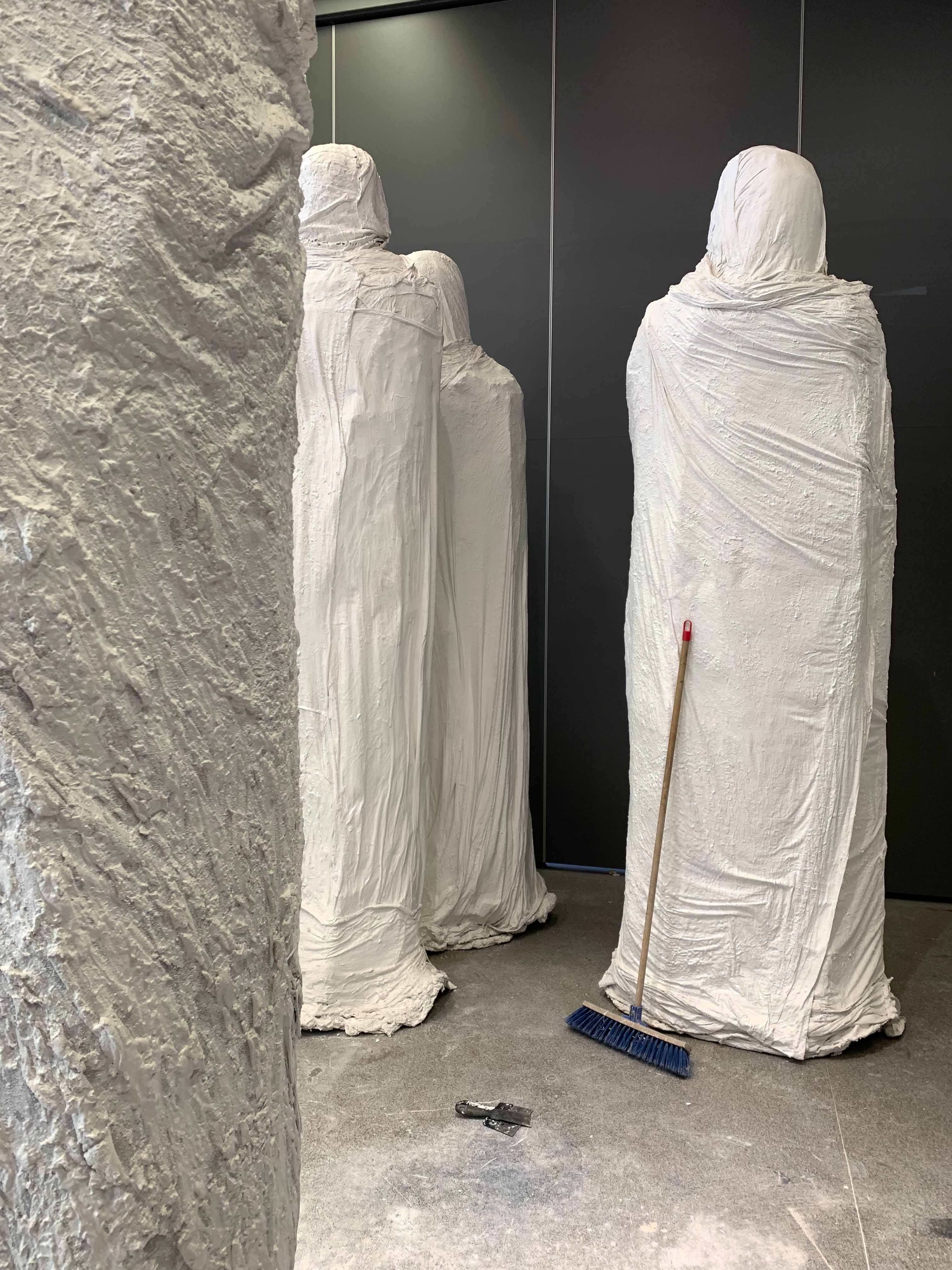

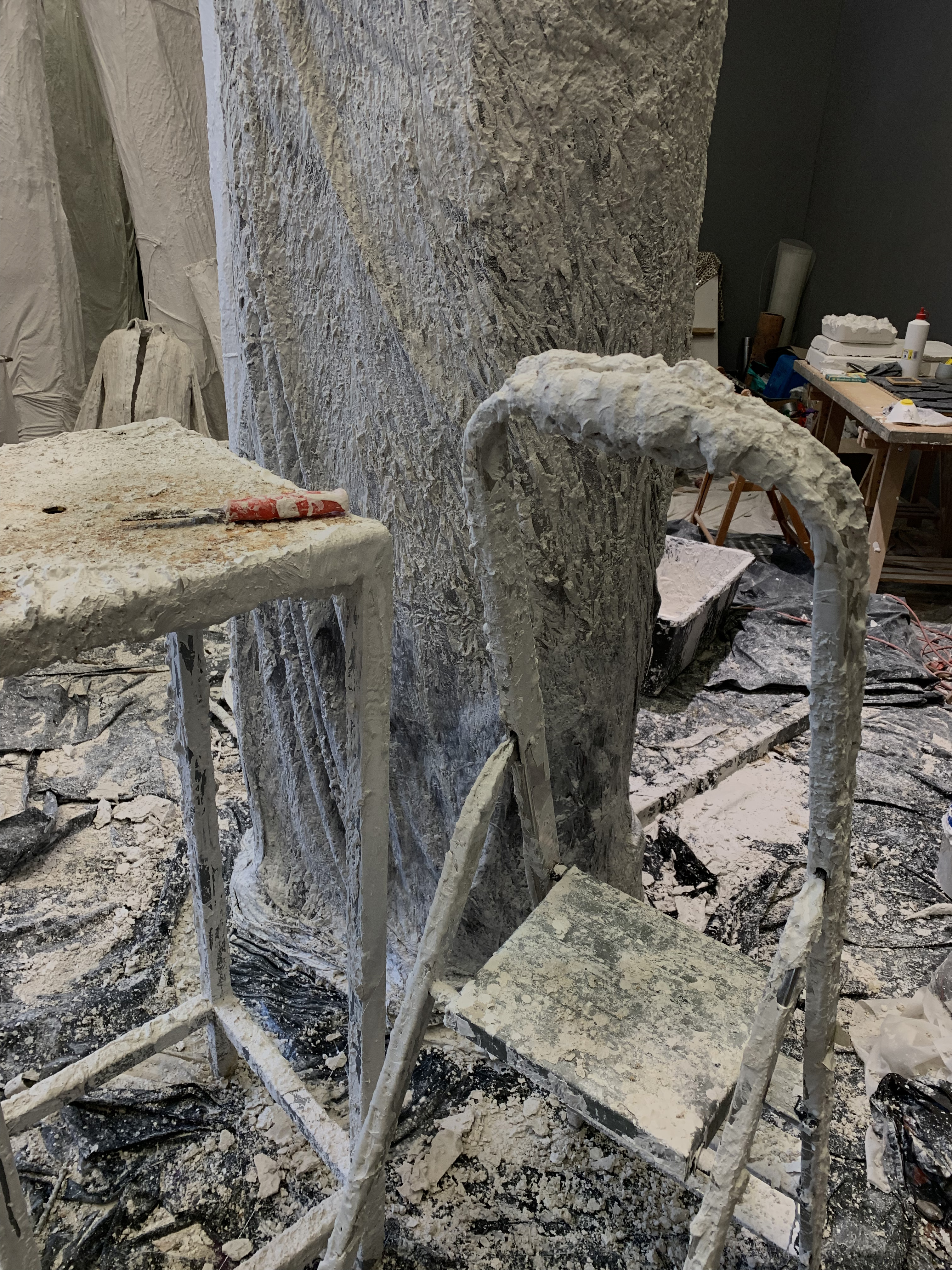

Knock-Knock
2023
Artistic intervention
An artistic intervention involving a series of Giants sculptures held in Warsaw on Friday, September 29.
During the action, two of the seven Giants sculptures were hand-delivered under the doors of Warsaw's cultural institutions — MSN and Pawilon Bliska 12 — where they stayed overnight. This action is a manifestation of both my authorial presence and the presence of the culture to which I belong. They are fragile monuments of memory, assembled from bedding, branches and gypsum, rising three and a half meters high in the indistinct silhouette of human figures without faces or personification.
Since their creation, the sculptures have been in the studio at the Academy of Fine Arts in Warsaw, where I study. Friday, September 29 was the last day they could stay there because of the conditions set by the academy: I do not know what would have happened to the works. Because of the difficulty of transporting such dimensional objects, the lack of storage space, and the academy's ultimatum, I decided to put the sculptures on public display. On Friday evening, with the help of colleagues and friends, we loaded the giants on our shoulders and carried them to the doors of Warsaw's cultural institutions without prior consent: the first giant stood in front of MSN, the second in front of Pawilon Bliska 12. The three of us carried the sculptures through Warsaw, tying them to ourselves with a belt and placing them on a movable cart.
During the action, two of the seven Giants sculptures were hand-delivered under the doors of Warsaw's cultural institutions — MSN and Pawilon Bliska 12 — where they stayed overnight. This action is a manifestation of both my authorial presence and the presence of the culture to which I belong. They are fragile monuments of memory, assembled from bedding, branches and gypsum, rising three and a half meters high in the indistinct silhouette of human figures without faces or personification.
Since their creation, the sculptures have been in the studio at the Academy of Fine Arts in Warsaw, where I study. Friday, September 29 was the last day they could stay there because of the conditions set by the academy: I do not know what would have happened to the works. Because of the difficulty of transporting such dimensional objects, the lack of storage space, and the academy's ultimatum, I decided to put the sculptures on public display. On Friday evening, with the help of colleagues and friends, we loaded the giants on our shoulders and carried them to the doors of Warsaw's cultural institutions without prior consent: the first giant stood in front of MSN, the second in front of Pawilon Bliska 12. The three of us carried the sculptures through Warsaw, tying them to ourselves with a belt and placing them on a movable cart.
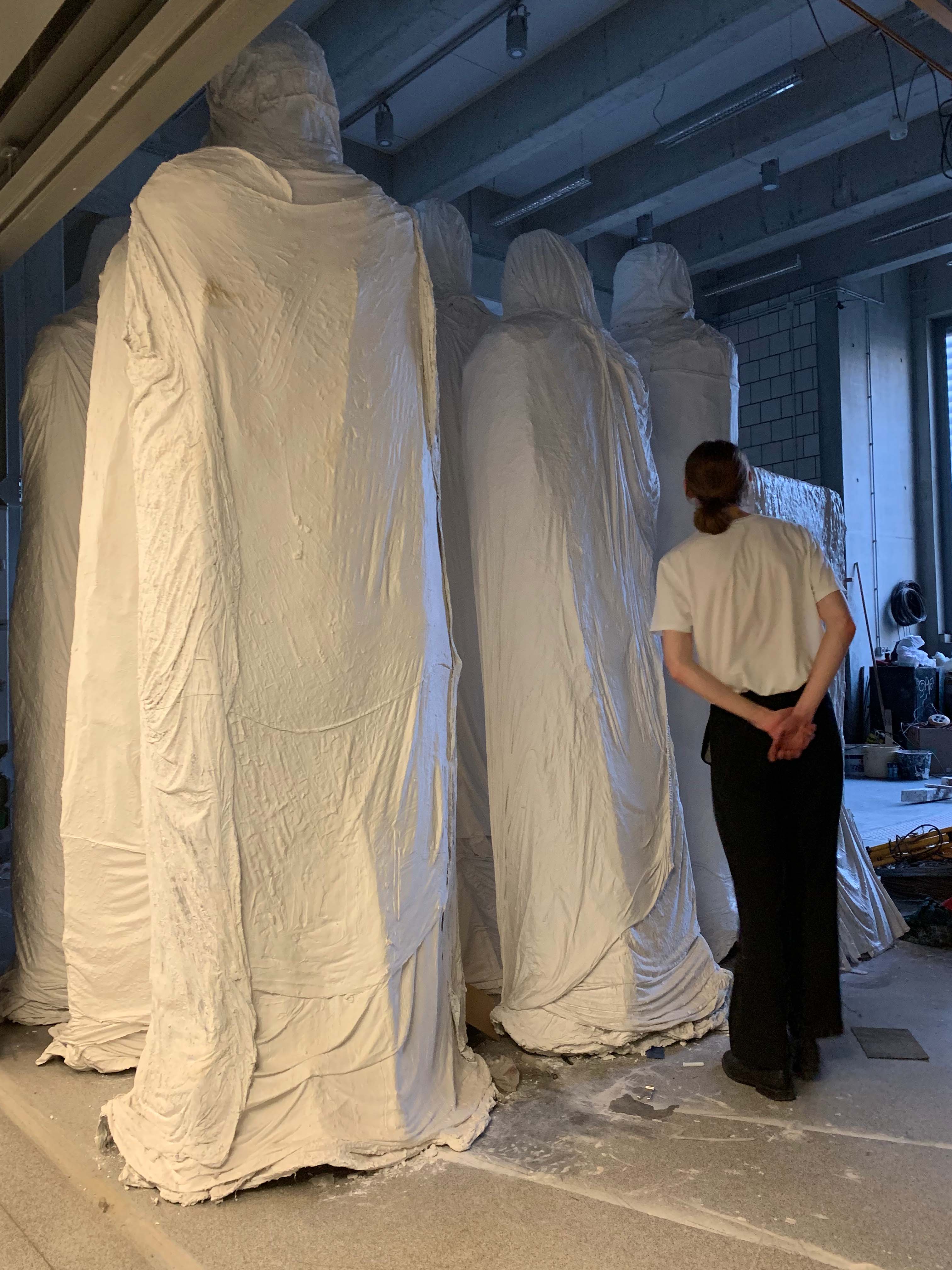


Talking Heads
2022-2024
Painting, paper, acrylic and glue
The “Talking Heads” series explores the nature of power and its impact on identity. Each portrait is linked to a figure within authoritative structures, reinterpreting power not only as a political force but as a personal and psychological phenomenon. The exaggerated, distorted heads reflect the tension of those hiding behind authority, as power erases individuality while remaining omnipresent and elusive. Though the series addresses systems of control, it is deeply autobiographical. I come from a country whose politics remain authoritarian and deeply rooted in Soviet legacy, where artists are trained within narrowly defined frameworks. This series marks a conscious departure from that system — an effort to unlearn its limitations and reclaim my own voice.


